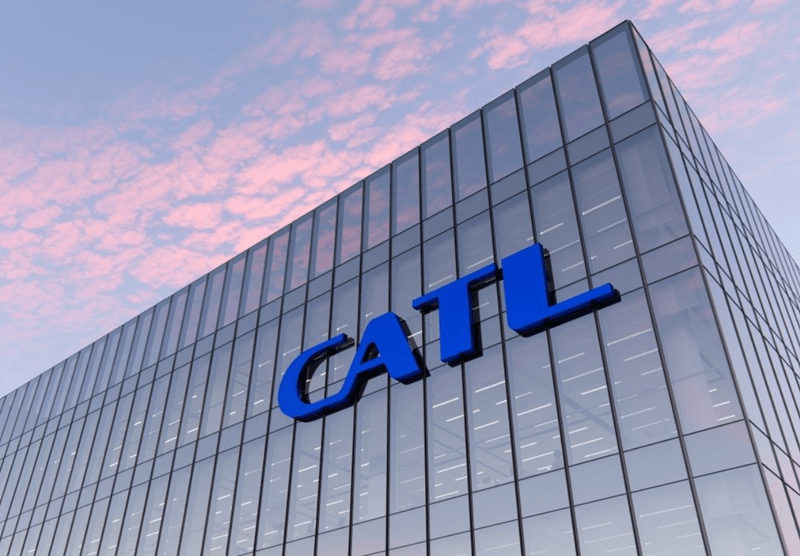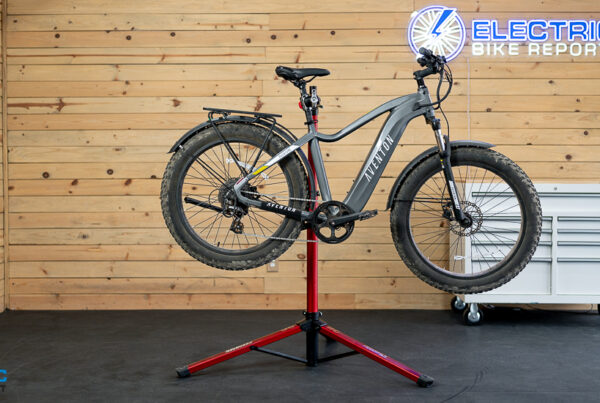CATL is now the biggest EV battery producer in the world. A little over 15 years ago, a lot of deep pockets decided to spend a ton of money on battery improvements, and we are now seeing the results of those investments.
In 2007, the EV industry got a boost when a man named Wan Gang became China’s minister of science and technology. Wan had been a big fan of EVs, and then he drove Tesla’s first EV Roadster as soon as it came out in 2008. He was a key influence in China making the national decision to go all-in on electric vehicles.

From 2009 to 2020, the Chinese government pumped $29-Billion into every Chinese company that had the ability to improve batteries and make EV’s. That equals $100-million dollars 290 times. And they also offered subsidies for EV purchases, and ordered the electrification of the all their nations buses and taxi’s to jump-start the process.
When Tesla wanted to sell EV’s in China, the government would only allow that if they used a Chinese-made battery. So Tesla contracted with CATL (Contemporary Amperex Technology Ltd) to build a factory there. Then, in 2020, US subsidies were changed so that EV’s sold here had to have at least 50% of the battery made in the US. So…CATL built a battery plant in Marshall, Michigan, in partnership with Ford.
Panasonic (Japan), LG Chem (S. Korea), and BYD (China) are all major players when it comes to making EV battery packs, but recently, CATL has become the largest in the world with 34% of all EV batteries sold in 2023.
When this huge amount of money started being pumped into battery chemistry improvement, nobody could tell ahead of time which experiments would end up having a breakthrough, so apparently, China funded everything the chemistry scientists could think of…
__________________________________
Lithium Iron Phosphate, LFP
Twenty years ago, there were several promising avenues to producing a better EV battery. Everybody wanted one with more range per volume, faster charging, a longer life, and a lower price. Engineers had no way of knowing which avenue they should spend millions of dollars and years of their lives on first, but…Lithium Iron Phosphate (LiFePO4) was one of the early winners.
I’ve been aware of LFP for over 15 years. Due to its well-known safety record, it was the “go to” 12V starter battery for small aircraft (as opposed to lead-acid). It was also the 48V off-grid battery of choice for RV’s, charged from a solar panel. However, the early LFP cells did not have the range per volume that the other chemistries had.
Tesla chose the Lithium-ion “NMC” chemistry. The cathode (positive electrode) was an aluminum ribbon collector with Lithium-Ion spread on it, along with tiny amounts of Nickel, Manganese, and Cobalt (NMC) mixed-in. Nickel and Cobalt are expensive and hard enough to get, that they could possibly limit the total number of EV’s that could be made each year (some of their batteries used the similar Lithium-NCA, for Nickel, Cobalt, Aluminum)
Tesla used Li-NMC to get the maximum range possible (back in 2008), which is something that US customers wanted badly. China started out their push by incentivizing hybrid cars first, which only needed a much smaller battery, allowing China to immediately build millions of them if they wanted. Since hybrids didn’t need hundreds of miles of battery range, they decided that LFP was a better gamble to use initially, and then of course…they began working on improving LFP to be as good as it could be.
This has lead to LFP enjoying some breakthroughs in power output, rapid charging, and long range. Even before improvements are calculated-in, LFP doesn’t use the expensive and rare Nickel or Cobalt. This was also a key factor for the Chinese planning, since the cost of a battery can be as much as 40% of the cost of the entire EV. Plus, needing nickel and cobalt would severely limit the number of EV’s that China could make.
China is also embracing solar-to-battery storage, plus making pure-EV buses and taxi’s, along with the mass adoption of EV passenger cars. They want to be an exporter of those to the entire world, and build a huge manufacturing base of these systems. If you could calculate how much battery material China wants to be making each year, it far outstrips our current known reserves of nickel and cobalt. For the Chinese, most of their early resources were focused on improving LFP.
There have been two schools of thought around the world about how batteries should be configured. Should we design them around high voltage and fast charging, with charging stations everywhere? (like Europe, and China), or…should we design them to have very long range, with owners simply charging at night in their garage (like the US)?
China has developed LFP to be both.
________________________________
Physical Upgrades to the Battery
Many of the early battery packs have arranged the cells into “modules”, and then connected the modules together to make the full pack size. The recent trend has been to design the pack around stacking very large flat cells, and eliminating the framework of the modules. By doing this, the packs can hold roughly 50% more range of battery material in the given space of an EV car’s battery pack frame, before any improvements in chemistry are factored-in. The car designers are calling this the “Cell To Pack” or CTP style of construction, instead of cell to module to pack. CATL calls this physical arrangement their “Qilin” battery style.
Another non-chemistry change was when CATL chose to use long flat pouch cells, which allowed them to add cooling plates in between the cells. Tesla and others have continued to use cylindrical cells, which do provide a lot of packaging options. However, cylindrical cells have some difficulty in getting heat out of the center of the cell. You can think of cylindrical cells as a long pouch cell, and its rolled up and put into a metal cylinder which offers some physical protection at the cell level.
The cooling plates do take up some volume in the pack, and normally that would reduce the range of the vehicle. however, as I will describe later in this article, advances in the chemistry increased the range enough that CATL engineers could sacrifice some volume to increase the cooling ability of their pack design.
By using a high voltage (such as 800V), the car can achieve their desired power level with fewer amps. The amps are what causes the majority of the heat in the core of the battery, and heat is also one of the main things that degrades the battery life. However, CATLs engineers needed to dissipate a tremendous amount of heat when charging, if they were going to be able to charge extra-fast.
From the earliest days of the modern lithium-powered EV’s, you could slow-charge the battery overnight, which allowed the battery stay fairly cool, letting it last a long time with no heat degradation. However, there has been a constant pressure to speed up the ability to charge the pack. Tesla has been an early adopter when it comes to fast-charging, especially since they chose to use a lower voltage of 400V, which then requires more amps to flow when charging and discharging.
The Tesla super-chargers can pump a very high DC current into their batteries, but it takes more than just fat copper cables and large connectors to achieve this. Their supercharger cables are liquid-cooled, and the Tesla batteries are also actively liquid-cooled. CATL knew they had to dramatically increase the cooling of the battery in order to be able to charge it very fast. They call their current version of this the “Extreme Fast Charging” or, XFC.
According to CATL, they can now achieve a charge of 400 kilometers range (248 miles), in only ten minutes of extreme fast-charging. This is a bold statement, but one caveat to this claim is that the demonstrator was their largest 621-mile battery pack, and large batteries can take-in more amps than a small battery. Even so, this feat has been verified, and its pretty significant.
Getting 600 miles of range from a full charge, and then being able to re-charge over 200 miles in only ten minutes is a stunning milestone. CATL calls this chemistry their “Shengxing” battery, and CATL says they are now working on an even better upgrade they are calling the Shengxing Plus.
__________________________________
What about Tesla?
Every competitors developments are immediately compared to what Tesla is doing, so lets give that a quick look.
Tesla recently lobbied for the tariff (import tax) on Chinese EV’s to be raised from 25% to 100%, and the main reason was the low price of cars from BYD and Geely, using CATL batteries. Tesla claimed that US EV manufacturers needed some time to transition to recent improvements in batteries before they could compete with China. CATL, BYD, and Geely are all funded by the Chinese government, so…giving US manufacturers like Tesla, Ford, and Chevy a few years to catch up is not completely unreasonable.
Tesla started out using thousands of small 18650 cylindrical cells. This was a compromise they were forced into, but…they embraced it, and emphasized the safety of having many small cells in a car crash. Tesla then developed a new format, the 2170 cell. They are only about 50% larger by volume, but it made them less expensive and there were fewer cell-to-pack connections. That size was chosen because Tesla wanted to make each cell larger, but they also needed to prevent the core of each cell from getting too hot.
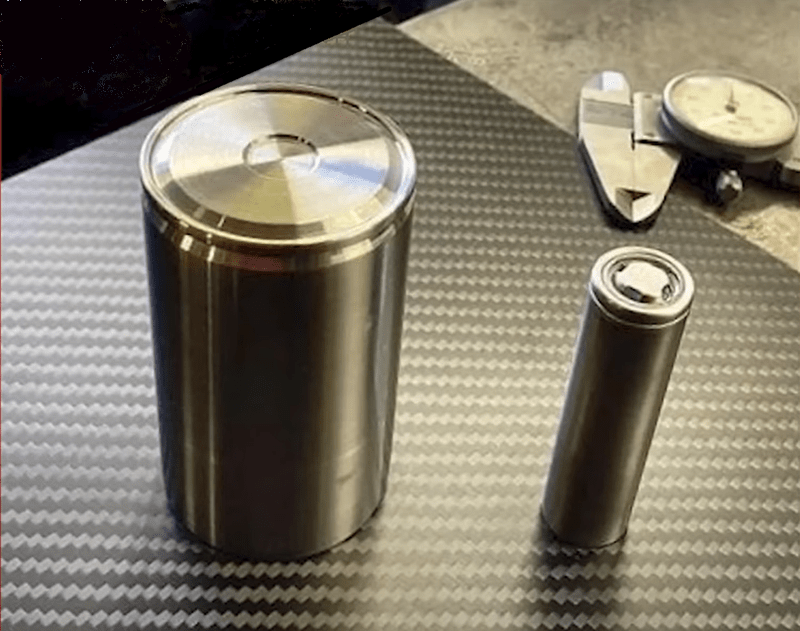
This trend of Tesla moving to larger cells is currently embracing a 4680 cylindrical cell (46mm in diameter, and 80mm in height). However, in order to make the cylindrical cell larger, they had to find some way to get any generated heat out of the core of the cell. They designed what they are calling a “tabless” cell. If we imagine that any cylindrical cell is simply a very long and narrow pouch cell that is rolled-up, you can see that a conductive tab at the beginning of the roll and the end of the roll would “work”, but electrons in the center of this long ribbon would have to travel a long distance to reach the “outlet” at either end.
High-amp 18650’s simply added more tabs along the long ribbon of a “pouch cell that is rolled up”, in order to reduce the bottle-necks to current , and reduce localized heating of the battery material near the tabs. However, the tabs did take up some of the internal volume, and that’s why high amps cells often had a lower capacity.
If we then draw current from the entire long-edges of the “long and narrow” pouch cell that is rolled-up inside cylindrical cells, you can eliminate all the small tabs. The cathode material is attached to a long and thin aluminum foil collector, and the anode material is spread onto a copper foil collector. Both of these metals are not only good electrical conductors, they conduct heat very well, too. Instead of power and heat needing to travel a long distance, the 4680 cell only needs the electrons and heat to travel up to the height of the cell to get out of the cell.

We wrote about how Dalhousie University is Tesla’s primary battery testing facility (to see that article, click here), and they quickly identified how important heat-management was in making the pack last a long time before it degrades to the point where it only has 80% of its designed range left in it. The first-gen Nissan Leaf did not have any active cooling, and when it was sold in hot climates, the pack did lose range too fast, leading to quite a few warranty claims. However, they sold enough Leaf’s worldwide that Nissan continued to avoid active cooling, and the lower price made the Leaf the most-purchased EV in the world.
However, for very “extreme” rapid charging, a significant active cell-cooling system is a definite requirement. I suspect that the BYD “blade” cells have a full-length collector, which would make its construction just like a Tesla 4680 cell, but without the cell being rolled up into a cylinder. Both the blade cell and the Tesla 4680 cell can provide more than enough amps to drive for an hour or two without the battery cells getting hot, but the big difference between them is that the blade cell has two long flat sides that provide the possibility for “extreme” cooling during the charge cycle.
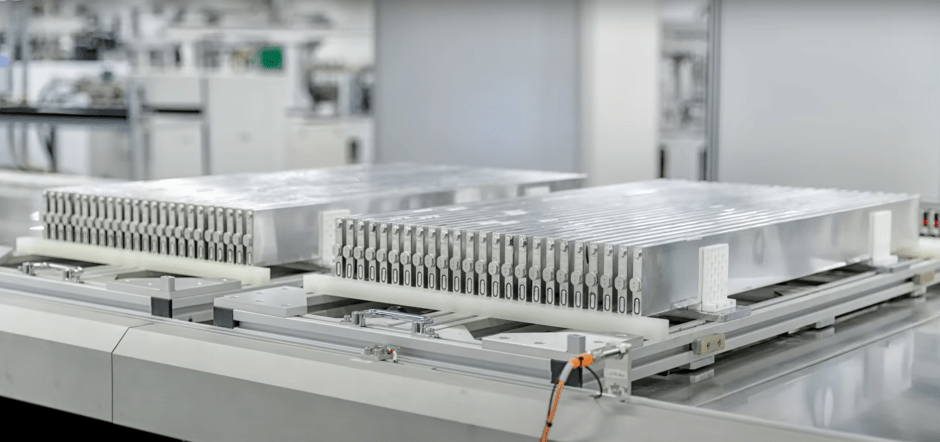
GM is now using similar “long and flat” cells that are liquid-cooled, which they call their “Ultium” pack (from South Korean battery manufacturer LG Chem) A few have actually been sold to the public in the GMC Hummer EV and the Cadillac Lyriq. Both of these EV’s are expensive and on a reservation wait-list, but the Hummer has one interesting feature. Instead of an 800V battery, it has two 400V packs, and when coupled with the right electronics, it can be charged from the 400V stations, but…it is already “future-proofed” to be able to charge from 800V chargers.
Chevy Silverado EV trucks are also in production, but at a low volume. It has the 400V/800V switching, but its conventional chemistry was only able to accept a charging rate that took its very large 400-mile pack from 10% to 90% in two hours. Much better than charging overnight, but not as fast as the newest Chinese systems.
I want to also add that…CATL is making 4680 cylindrical cells too, and some of them are even LFP chemistry, found in the Geely Zeekr (To see our article on that, click here). It appears as though the Chinese are funding every possible option to make sure that they are right in the middle of whatever ends up appealing to customers.
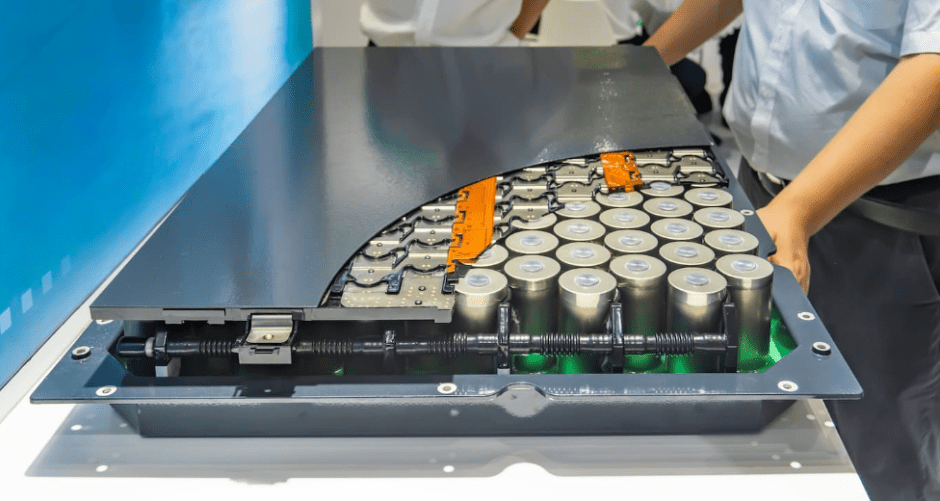
_______________________________________
EV Aircraft Batteries
As I mentioned before, China wants to not only build their own EV’s, they want to sell batteries and also EV’s to the rest of the world. If this is going to be our future, then China wants to own a big chunk of it, so their government is investing heavily in research. When they feel they have a good idea for a product, they build enormous factories to immediately be able to manufacture the hot new thing at production scales.
Two areas where this is evident is in solar panels storing the suns energy into large battery banks, and also developing electric aircraft.

Back in 2020 we wrote about how quite a few electric aircraft were being developed in anticipation of the newer batteries being available soon (to see that article, click here), and just four months ago we wrote about EV-VTOL aircraft that were being developed (to see that article, click here). Electric aircraft are the most demanding application for these batteries. Quite a few people are standing by to spend millions of dollars to whoever can give them a battery that provides a very long range in a small package.
We have all been promised that “Solid State Batteries” were going to be available soon, and with them we could have extremely rapid charging along with long range in a small battery pack. SSB’s do exist in the lab. In fact Maxell has made the fireproof SSB cells that are in the International Space Station right now. The problem is how to make an SSB that is mass-produced at an affordable price. The Chinese advancements have allowed LFP batteries to surpass every expectation we had for SSB’s.
The product that CATL has developed for aircraft adds some silicon and graphene to the Anode, which had historically been only graphite. They are claiming an astounding 500 Wh/kg, while EV cars from a year ago were around 200 Wh/kg. They are calling this a “semi-solid” battery, since true solid state batteries still face some roadblocks. Rather than call it semi-solid, they have chosen to call this their “condensed” battery.
And as much as I wonder how accurate this claim can be, Amprius in California has also recently announced they have a 500 Wh/kg battery that is described in similar terms. Amprius has been making batteries for military drones, and the US military is interested in these because by having some of their drones use an electric drivetrain, there is no heat signal from an engines exhaust.
CATL announced that they expect the demand for their condensed batteries to be so strong, they will be reserving the initial production for electric aircraft to help establish their dominance in that market…
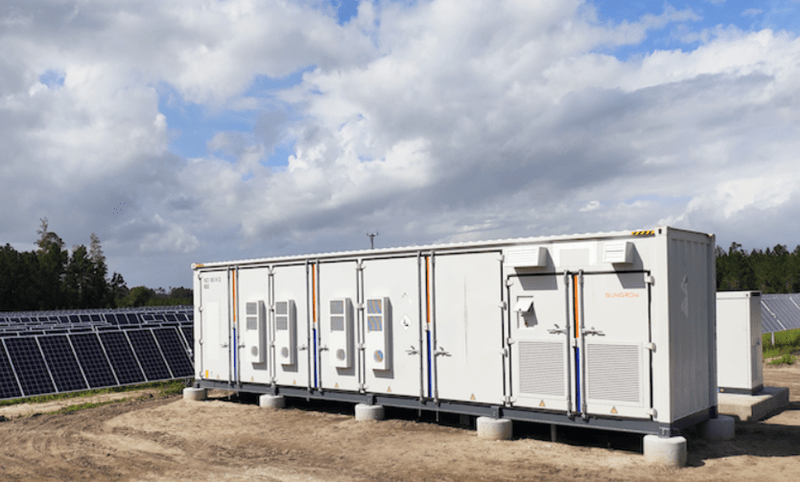
Grid power storage is not as sexy as electric aircraft or EV sports cars, but it is a huge market that is expected to grow rapidly. Twenty years ago, many municipalities invested in solar panels and also very large wind-generators. Over the last decade, the cost of solar panels has dropped sharply, while the performance has increased.
Australia has a lot of sun, and they were steadily increasing their use of grid-scale solar-panel farms. However, back in 2016, a large storm caused a statewide power outage. Tesla was contracted to build a large power bank in Adelaide for load-leveling (called their “Megapack”). By every measure, the “Hornsdale Power Reserve” has been a great success, and it represents an enormous global market for similar facilities.
Since stationary battery packs do not have to worry about size and weight, CATL engineers have focused their research funding to increase the longevity of the cells. CATL calls these their “Tener” batteries, and they use the LFP chemistry. CATL claims that the cells can be cycled daily and show no capacity degradation for five years or 15,000 cycles. In some places, CATL has called this their “BESS” (Battery Energy Storage System).
__________________________
Sodium Batteries
CATL has also developed sodium-based batteries (Na-Ion) , which do not need any nickel or cobalt.
The good news is that they have figured out how to get the first-generation of cells to work. Also, there is no shortage of sodium anywhere, since it can be extracted from salts that are abundant and widespread. Also, it was a pleasant surprise for CATL to find that their sodium batteries could be charged VERY fast.
However, there are two pieces of bad news, which is that the sodium batteries in their current form do not have the range-per-volume of lithium batteries, so they might be best used for stationary grid storage, in order to free up all the available lithium for use in vehicles.
Also, these sodium batteries do not yet have an acceptable life-cycle in years, although government-sponsored labs continue to experiment on ways to improve them. The small $12,000 BYD “Seagull” EV is being sold in China with a sodium-based battery to gain real-world data.
If you want to look into sodium Ion batteries more, Natron Energy in the US and Northvolt in Sweden are also making large investments in Sodium-Ion battery experiments. Natron Energy was willing to publicly share that they are using “Prussian Blue” mixed with a little iron and manganese in the Cathode, and Prussian Blue with manganese in the Anode.
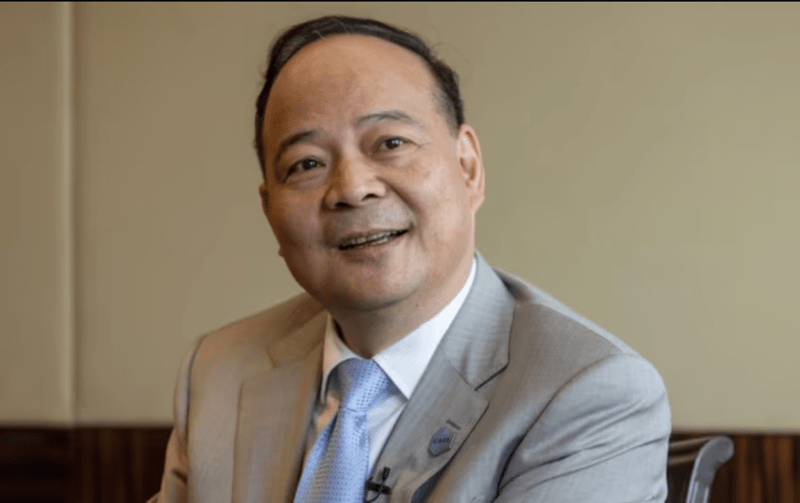
CATL has been spending a LOT of money on solid state battery experiments this whole time, and yet they did not experience the breakthroughs that were anticipated. For the last six years I kept hearing about how SSB’s were “just around the corner”.
About a month ago, I started to see youtubes that claimed there were several major breakthroughs in battery tech this year, but the numbers sounded too fantastic. As I dug around, it seemed like one respected source after another verified demonstrations of longer range and faster charging, along with very long battery life.
I am by nature a skeptical person, but China did in fact spend over $29 billion on battery tech, and they have formed partnerships with many car companies, like Tesla, Ford, and Mercedes. American auto-makers did lobby for the Chinese EV tariff to be raised from 25% to 100%, to give Tesla, Ford, and GM time to catch up. BYD, Geely, and CATL are building factories in North America to avoid those tariffs.
If you haven’t heard of CATL before, you are going to be hearing a lot about them soon.
_______________________________________________
Written by Ron/spinningmagnets, June 2024
.
.
.
#CATL #Brings #Big #Battery #Breakthroughs
Source link

